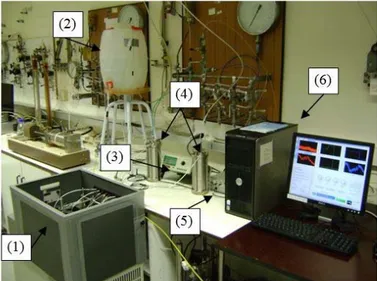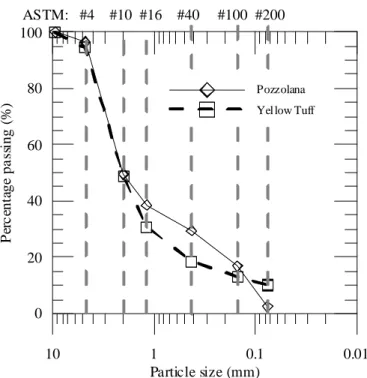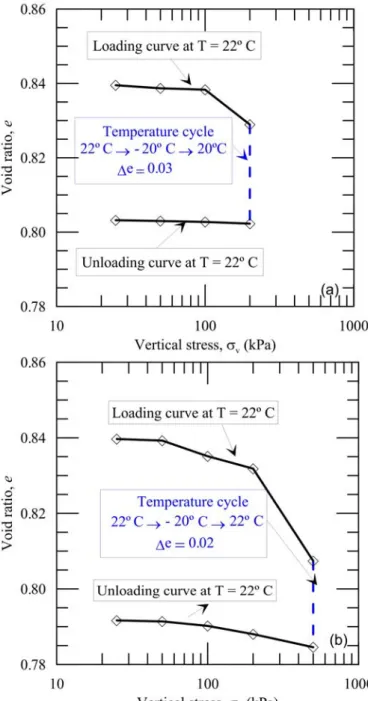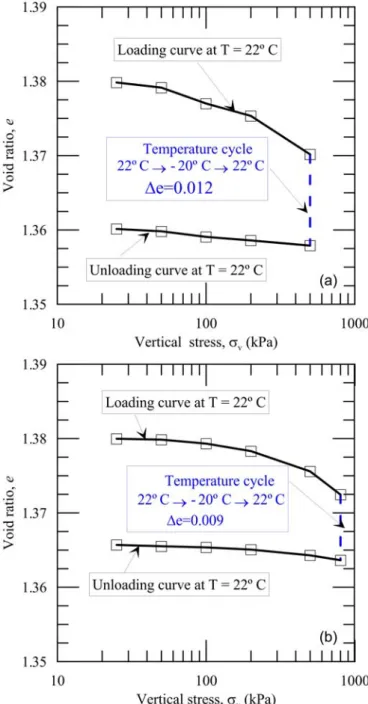1 INTRODUCTION
Artificial Ground Freezing (AGF) may be used to provide ground support, groundwater control, or structural underpinning during construction. The frozen earth wall, which is constructed prior to ex-cavation, for practical purposes eliminates the need for sheeting of the earth, site dewatering, soil stabili-zation, or concern for movement of adjacent ground. AGF has been extensively used during construction of Line 1 of Napoli Underground, to ensure stability and waterproofing of the platform tunnels and in-clined passageways during excavation below the ground water table through loose granular soils of pyroclastic origin (Pozzolana) and a fractured soft rock (Neapolitan Yellow Tuff).
It is a versatile technique that involves the use of refrigeration to convert in situ soil pore water into ice. The ice becomes a bonding agent, fusing togeth-er adjacent particles of soil or blocks of rock to in-crease their combined strength and make them im-pervious to water seepage. The ice content increases decreasing temperature, two phases of water liquid and solid occupy the pore space. A liquid ice-surface tension, li, develops at the interface of the two
phases. This tension must be balanced by the suction s defined as the difference in frozen and liquid water pressure Pi and Pl respectively.
Under the hypothesis of equal chemical potential the ice pressure should be derived by the Clausius
Clayperon equation (see Nishimura et al 2009, Gens 2010, Casini et al 2013) as function of pore water pressure and temperature.
The freezing retention model which links the de-gree of saturation of liquid water to the suction s=Pi-Pl can be derived using the Van Genuchten (1980) model with the ice entry value (si) related to the air
entry value in unsaturated condition (sa) through the
relations si=sali/la where la and li are the
liquid-air and liquid-ice surface tensions.
The modification of pore frozen and liquid water pressure regimes modify the effective stress acting on soil skeleton, which, in turn, induces mechanical deformation.
Volume change of thawing soil will result from both phase change (ice to water) and flow of excess water out of the soil. Drainage of the thawed soil leads to additional volume change, the amount de-pending on consolidation and soil structural changes that occurred during the previous freezing cycle.
A variety of factors such as stress acting, thermal cycle, moisture change histories, influence the amount and distribution of ice in frozen ground. For ice-rich soils, a rough estimate of the amount of thaw settlement can be based on the visible thick-ness of ice lenses. This method can result in signifi-cant errors; duplicating field conditions (Andersland and Ladanyi 2004).
Freezing-thawing tests on natural pyroclastic samples
R.R. Peláez, F. Casini, E. Romero & A. Gens
ETCG, Universitat Politècnica de Catalunya, Barcelona, Spain
G.M.B. Viggiani
DICII, Università di Roma Tor Vergata, Roma, Italy
ABSTRACT: Artificial Ground Freezing is one of the construction techniques that were extensively adopted during construction of Line 1 of Napoli Underground, to ensure stability and waterproofing of the platform tunnels and inclined passageways during excavation below the ground water table through loose granular soils of pyroclastic origin (Pozzolana) and a fractured soft rock (Neapolitan Yellow Tuff). The aim of the pa-per is to study the behavior of the Pozzolana and Neapolitan Yellow Tuff subject to freezing and thawing cy-cle at constant vertical stress under oedometric condition. As the temperature decreases the ice content in-creases and a liquid ice-surface tension, li, develops at the interface of the two phases as the temperature
decreases. This tension must be balanced by the suction s defined as the difference in frozen and liquid water pressure Pi and Pl respectively. Two oedometers working under suction and temperature controlled conditions
have been modified to work with temperature below zero degree. The stress path followed by samples repro-duce the in situ vertical stress interested by freezing and thawing.
In this work the behavior of Pozzolana and Yel-low Tuff has been investigated using two oedome-ters apparatuses working under temperature and suc-tion controlled modified for temperature below zero degrees. On freezing, the ice content increases, the suction as well and the frozen soil swell due to the decreases of effective stress acting on soil skeleton and to the phase change of water. On thawing, the ice content and the suction decreases with increasing temperature, and for existing overburden pressures the soil skeleton must adapt itself to a new equilibri-um in terms of effective stress and void ratio due al-so to the degradation induced by cycle of freezing and thawing.
Russo et al (2012) reported the evolution of set-tlement of a reference point during construction of Line 1 in Naples (Figure 1). A light swelling is measured during swelling (points 2-3) while a more pronounced shrinkage is measured during freezing (points 5-6). It should be highlighted that thawing in this case happen after the excavation of platform tunnel and permanent lining installation which in turn contributed also to the measure shrinkage. The understanding of the physics phenomena at the base of thaw settlement are of fundamental importance in the application of AGF as ground-support systems in urban tunneling where the differential settlement should damage the building adjacent.
Figure 1. Settlements of reference point B8. (1) to (2): installa-tion of anchors; (2) to (3): ground freezing; (4): excavainstalla-tion of platform tunnel; (5): permanent lining installation; (5) to (6): thawing; (7): underpinning. (Russo et al., 2012).
A brief description of the modification made on the apparatuses and the first experimental results ob-tained at different vertical stress are presented and discussed. The results shows the importance of the vertical stress applied to the deformation accumulat-ed after a cycle of freezing and thawing in particular as the vertical stress increases the irreversible de-formation decreases. The dede-formation accumulated for the same vertical stress tested are greater in Poz-zolana than in Yellow Tuff.
2 EXPERIMENTAL PROGRAM
2.1 Equipment
The Figure 2 shows the configuration of the experi-mental set-up of the experiexperi-mental apparatuses used during in this investigation. The experimental set-up is composed by a thermal bath in which the refriger-ating fluid circulate at controlled temperature rang-ing between +30ºC and -30ºC.
The temperature is controlled with a thermostat in the thermal bath. The refrigerating medium is a mixed fluid composed by 50-50 proportions of water and ethylene glycol.
Two oedometer cells (see Romero (1999)) have been modified to be used with temperature below zero degree, equipped with thermocouples to moni-tor the temperature in the sample and in the thermal bath and immersed in the thermal bath (Peláez, 2013).
The water drainage is allowed through the bottom and connected to reservoir (for details see Peláez 2013). The vertical stress is applied through com-pressed air at the top of the sample regulated by step. The air used to apply vertical stress on the top of sample has been dessicated through a salt mixture (4 in Figure 2) located in a chamber.
A data acquisition system has been developed to read signals in millivolts from thermocouples and LVDTs onto the oedometer cells, and for last a data processing system that use a software that convert those signals to temperatures (ºC) and displacements (mm).
Figure 2. Experimental set-up. (1) Thermal bath with oedome-ters cells, (2) water reservoir, (3) external thermocouple, (4) air desiccation chamber, (5) data acquisition system, (6) data pro-cessing unit.
2.2 Materials
The samples of Pozzolana and Yellow Tuff used in this investigation have been retrieved in the subsoil of the Municipio Station, extension of Line 1 Naples
underground (see Viggiani & De Sanctis 2009, Rus-so et al 2012). The samples were retrieved as a part of the drilling campaign during the construction of tunnels performed by Tecno-in SpA.
Two undisturbed core samples has been used at UPC Geotechnical Laboratory. The samples of natu-ral Pozzolana has been retrieved in 10-12m, while the Yellow Tuff in 20-24 m depths. The basic prop-erties of these materials have been obtained and summarized in Table 1. The particle size distribu-tions by sieve analysis (ASTM D22-63) of Pozzola-na and Yellow Tuff are reported in Figure 3.
The percentage with d> 2mm is 50% for both ma-terials, the sand percentage is 40% for Yellow Tuff and 50% for Pozzolana.
Table 1. Initial (natural) conditions of materials.
Properties Pozzolana Yellow tuff
Density, Mg/m3 1.67 1.15 Dry density, Mg/m3 1.33 1.03 Specific gravity, Mg/m3 2.46 2.46 Void ratio 0.84 1.38 Porosity 0.46 0.58 Water content, % 24.46 11.17 Degree of saturation,% 70.64 19.90
Figure 3. Particle size distribution.
2.3 Tests programme
The sample has been trimmed and placed into the cell ring (50 mm in diameter and 20 mm high). The stress path followed for each sample is reported in
Figure 4. It is divided in five steps defined as fol-lows:
Saturation stage with a back pressure pw=10
kPa at the bottom of the sample. This phase last mostly 6 hours. During this stage the up-per valve was at atmospheric condition. Wa-ter outlet has been observed at the top boundary ensuring water saturated condi-tions;
Compression phase up to the target vertical stress by step. Each step lasting 24 hours. The maximum total vertical stress tested were 200-500 kPa for Pozzolana, 500-800 kPa for Yellow Tuff. The target vertical stress has been chosen as representative of the in situ vertical stress typically acting on Pozzolana and Yellow Tuff;
Temperature cycle: freezing and thawing. The temperature cycle +22ºC to -20ºC has been applied by step at constant vertical stress. Each step lasting 6 hours. The sam-ples have being maintained at the minimum temperature of -20ºC for 48 hours. The dis-placement has been monitored during this period to check the creep behavior of the fro-zen samples. After that the sample has been thawed by step up the initial temperature; Unloading phase at temperature of 22ºC by
step to zero vertical stress, sample desman-tling (see Figure 4).
Figure 4. Stress and Temperature paths followed on two sam-ples of Pozzolana and two samsam-ples Yellow tuff.
The thermal bath has been isolated by the labora-tory environment through a cap to avoid temperature fluctuations. The top cap of the oedometer has been modified with a proper hard plastic cap because dur-ing the freezdur-ing process the metallic connection freezes. Such kind of frozen brine around the con-nection to the LVDT point measurement affects the
10 1 0.1 0.01 Particle size (mm) 0 20 40 60 80 100 P er c ent ag e pa ss in g (%) Pozzolana Yel low Tuff
measurement of the vertical displacement. To avoid this phenomena the top cap has been changed to plastic ones. Two thermocouple has been inserted in the apparatuses just in contact with samples to check the temperature acting on the soil.
3 EXPERIMENTAL RESULTS
The experimental results of four odemeter tests are presented in this section: two oedometer tests for Pozzolana with vmax= 200 and 500 kPa and two
oe-dometers tests for Yellow Tuff with vmax = 500 and
800 kPa.
The experimental results for Pozzolana are re-ported in Figure 5 a-b. The void ratio decreases up to 200 kPa is similar in both samples with a e~0.02. The samples compressed up to 500 kPa shows a yielding in the last steps. The preconsolida-tion stress should be between 200 and 500 kPa. The freezing-thawing cycle shows an accumulated plas-tic deformation e(T)=0.03 for sample with vmax=200 kPa and e(T)=0.02 for sample with
vmax=500 kPa.
In the unloading step, the point follows a line in the e-logsv plane with an inclination Cs=0.001 for
vmax=200 kPa (Figure 5a) and Cs=0.004 for
vmax=500 kPa (Figure 5b).
The results of Yellow Tuff are reported in Figure 6(a) and (b). During the compression stage both samples shows a similar behavior up to 500 kPa. The last step for sample up to 800 kPa shows a light increases of the slope in the e-logv not a proper yielding. This results suggest that the preconsolida-tion stress for Yellow Tuff is reached for higher ver-tical stresses.
The freezing-thawing cycle exhibit an irreversible void ratio e depending, also in this case, from the vertical stress acting. The e(T)=0.012 with vmax=500 kPa and e(T)=0.009 with vmax=800
kPa.
The inclination of the unloading line Cs=0.0017 with vmax=500 kPa (Figure 6a) and Cs=0.0012 for
vmax=800 kPa (Figure 6b).
The volume change after cycle of freezing and thawing is the result of phase change (ice to water) and flow of volume change of thawing soil will re-sult from both phase change (ice to water) and flow of excess water out of the soil. Drainage of the thawed soil leads to additional volume change, the amount depending on consolidation and soil struc-tural changes that occurred during the previous freezing cycle.
A variety of factors such as stress acting, thermal cycle, moisture change histories, influence the amount and distribution of ice in frozen ground. For ice-rich soils, a rough estimate of the amount of
Figure 5. Oedometer tests on Pozzolana in the logv-e plane:
(a) vmax=200 kPa; (b) vmax=500 kPa
thaw settlement can be based on the visible thick-ness of ice lenses. This method can result in signifi-cant errors; duplicating field conditions (Andersland and Ladanyi 2004).
The deformation accumulated after a cycle of freezing (-20ºC) and thawing (+20ºC) are reported in terms of change in void ratio e (T) as a function of vmax in Figure 7 for Pozzolana and Yellow Tuff.
The accumulated void ratio after a cycle of freez-ing and thawfreez-ing decreases as the vertical stress in-creases for both Pozzolana and Yellow Tuff. The ac-cumulated void ratio is higher in Pozzolana than in Yellow Tuff.
Figure 6. Oedometer tests on Yellow Tuff in the logv-e
plane: (a) vmax=500 kPa; (b) vmax=800 kPa
Figure 7. Void ratio extent accumulated after freezing and thawing as function of the vmax
CONCLUSIONS
In this work have been presented the first experi-mental results on two pyroclastic soils subject to compression and temperature cycle below zero de-gree. A temperature controlled apparatuses working under suction controlled condition has been modi-fied to work with temperature below zero. The oe-dometer has been equipped with thermo couple to measure the temperature in the sample. The top cap of the apparatus has been modified to avoid the freezing of the connection with the LVDT to meas-ure the vertical displacement.
The experimental set-up is composed by a ther-mal bath in which the refrigerating fluid circulate at controlled temperature. The refrigerating medium is a mixed fluid composed by 50-50 proportions of wa-ter and ethylene glycol.
The samples tested were two pyroclastic soils re-trieved from Naples, where artificial ground freezing has been extensively used during construction of Line 1 Underground. The AGF has been used to en-sure stability and waterproofing of the platform tun-nels and inclined passageways during excavation be-low the ground water table through loose granular soils of pyroclastic origin (Pozzolana) and a frac-tured soft rock (Neapolitan Yellow Tuff).
Four samples of Pozzolana and Yellow Tuff has been tested under constant vertical stress with tem-perature cycle ranging between laboratory tempera-ture to -20 ºC by step.
The target vertical stress has been chosen as rep-resentative of the in situ vertical stress typically act-ing on Pozzolana and Yellow Tuff. One common vertical stress has been tested also to compare the behavior of the two pyroclastic soils subject to the same stress path in term of vertical stress and tem-perature.
This first results shows that the accumulated void ratio change after a cycle of freezing and thawing increases with decreasing vertical stress for Pozzo-lana and Yellow Tuff as well.
For the same vertical stress the void ratio exhibit by Pozzolana is mostly double compared to the Yel-low Tuff.
Further investigation must be done at different vertical stress and temperature. The calibration of the apparatuses must be completed.
ACKNOWLEDGMENTS
The first author wish to extend his gratitude to the Ministerio de Educación Superior, Ciencia y Tencnología (MESCyT) of Dominican Republic for providing financial support for the Master’s degree studies in Geotechnical engineering at UPC.
The financial support of the European Commis-sion for the second author through the “ Marie Curie
Intra European Fellowship” (EU FP7-NuMAGF, grant agreement 272073) is acknowledged. The au-thors are grateful to Tecno-in SpA for their technical support to provide the samples retrieved in Napoli. REFERENCES
Andersland, O.B. & Ladanyi, B. (2004). Frozen ground engi-neering. Wiley and Sons Inc., New Jersey.
Casini, F., Gens, A., Olivella, S., Viggiani, G.M.B. 2013. Cou-pled phenomena induced by freezing in a granular material.
In: Coupled Phenomena in Environmental Geotechnics:
From Theoretical and Experimental Research to Practical Applications - Proceedings of the International Symposium, ISSMGE TC 215, pp. 467-473
Gens, A. 2010. Soil-enviroment interactions in geotechnical engineering. Géotechnique 60(1): 3-74.
Nishimura, S., Gens, A., Olivella, S. & Jardine, R.J. (2009). THM-coupled finite element analysis of frozen soil: formu-lation and application. Géotechnique 59(3): 159-171. Peláez, R.R. 2013. Congelación artificial de dos suelos
natura-les. Un enfoque experimental con desarrollo de equipo, Master thesis Universitat Politècnica de Catalunya: 1-76 Russo, G., Viggiani, C. & Viggiani, G.M.B. 2012.
Geotech-nical design and construction issues for lines 1 and 6 of the Naples underground. Geomechanik und Tunnelbau 5(3): 300-311.
Viggiani, G.M.B. & de Sanctis, L. 2009. Geotechnical aspects of underground railway construction in the urban environ-ment: The examples of Rome and Naples. Geological Society Engineering Geology Special Publication 22(1): 215-240



